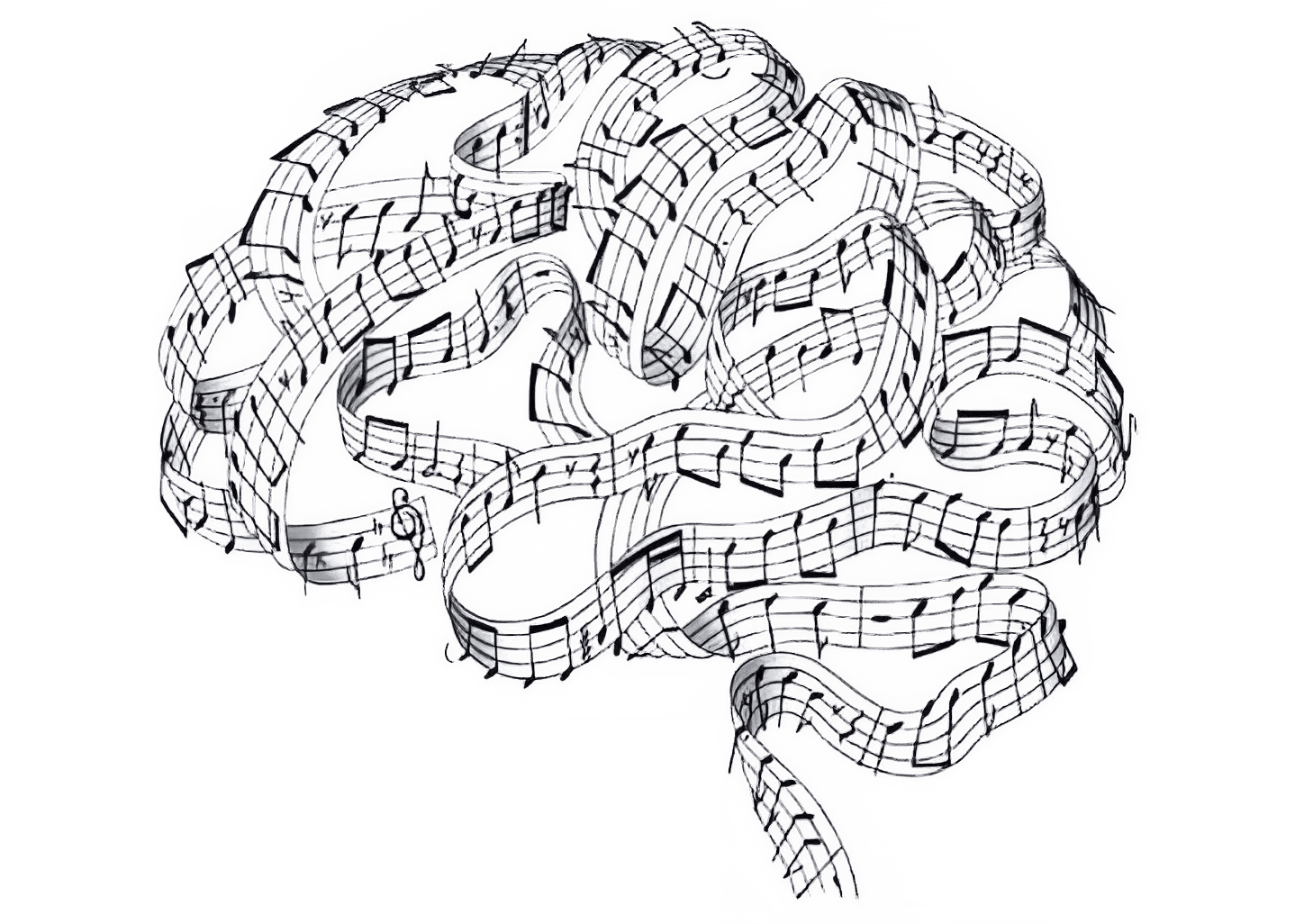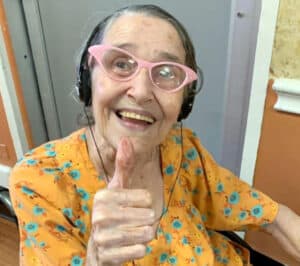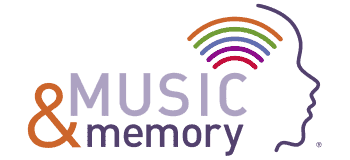
Music and the Brain
Music & Memory is built on the understanding that the music we love most is deeply embedded in our brains, shaping both our conscious thoughts and unconscious emotions. This connection becomes even more powerful when someone is experiencing memory loss, dementia, or cognitive decline.
Even when other parts of the brain struggle, music can serve as a key that unlocks memories and emotions. Familiar songs or beloved pieces tap into long-stored experiences, triggering recognition, connection, and engagement. By using music as an external stimulus, we can activate pathways in the brain, helping to stimulate cognition, spark awareness, and bring moments of clarity and joy—even for those who may otherwise seem unreachable.
Oliver Sacks on Music, Memory and Emotion
Dr. Oliver Sacks, renowned neurologist and best-selling author of Musicophilia, was a dear friend to Music & Memory and a champion of the profound connection between music, memory, and emotion.
In this video, Dr. Sacks explores how familiar, beloved music can awaken the brain, offering moments of clarity, recognition, and connection for people living with Alzheimer’s and severe memory loss. His pioneering work helped shape the understanding that music isn’t just entertainment—it’s a lifeline to identity and personal history.
Dr. Sacks passed away on August 30, 2015, but his legacy lives on in the countless lives touched by his research and in the work of Music & Memory.
“The past which is not recoverable in any other way is embedded, as if in amber, in the music, and people can regain a sense of identity.”
— Oliver Sacks
Featured Research

Economic Benefits of Music Engagement in Alzheimer’s Care
In 2025, the NeuroArts Blueprint Initiative, in partnership with AARP and Deloitte, released an economic analysis evaluating the impact of music engagement for individuals living with Alzheimer’s disease. The study found that regular music engagement—such as two 30-minute sessions per week—can improve emotional well-being, reduce caregiver burden, and enhance quality of life, with a return of $2.40 for every $1 invested. These findings provide compelling clinical and financial justification for integrating music-based interventions into dementia care strategies across settings.
Read the full report.

The Impact of Personalized Music on Quality of Life in Dementia Care
In 2024, researchers at Brown University conducted one of the largest studies to date on the effects of personalized music in dementia care. Following over 3,500 nursing home residents, the study found that personalized music programs led to improved mood, social engagement, and cognitive awareness, while also reducing agitation, distress, and reliance on psychotropic medications. Caregivers reported that residents who engaged with personalized music were more present and interactive, reinforcing music as a powerful tool for enhancing quality of life and emotional connection in dementia care.
Read the full study or the Brown University article.

The Impact of Music & Memory on Resident Outcomes in California Nursing Homes
In 2020, researchers at the Betty Irene Moore School of Nursing at UC Davis conducted the most comprehensive study of its kind on Music & Memory’s effects in nursing homes. The three-year study of 4,107 residents in 265 California nursing homes found the use of antipsychotic drugs declined by 13% and anti-anxiety medications declined by 17% each quarter for residents with dementia using the music program. The odds of depressive symptoms decreased 16% per quarter and the odds of reported pain decreased 17% per quarter. In addition, the number of days on medications declined by 30% and aggressive behaviors reduced by 20%. The results are published in the Journal for Post-acute and Long-term Care Medicine (JAMDA).

Music Activates Regions of the Brain Spared by Alzheimer’s
An April 2018 study reports that “objective evidence from brain imaging shows personally meaningful music is an alternative route for communicating with patients who have Alzheimer’s disease.” The research, published by a team at University of Utah Health in Salt Lake City in The Journal of Prevention of Alzheimer’s Disease, demonstrates that familiar music may facilitate attention, reward and motivation, which in turn makes it more possible to manage emotional distress in Alzheimer’s. While the study’s small sample size and single imaging sessions leave room for more research to be done, the findings mark a significant step toward demonstrating how Music & Memory’s personalized music program is a therapeutic mechanism to address measurable improvement in mood, awareness and quality of life for people with dementia. Read more.

Music & Memory and Improved Swallowing in Patients with Advanced Dementia
Swallowing, self-feeding and choking issues affect many people with advanced dementia, leading to serious health consequences such as dehydration, malnutrition and weight loss (change of status). This 2018 study, published in conjunction with Dr. Stephen Post of Stony Brook University in Dementia: The International Journal of Social Research and Practice presents data indicating Music & Memory’s personal music intervention improves swallowing in individuals with advanced dementia, making eating easier and potentially diminishing reliance on feeding tubes and PEG intervention. This is a significant finding at a pilot level and is strong enough to warrant further replication. Read more.

An Individualized Music-Based Intervention for Acute Neuropsychiatric Symptoms in Adults with Cognitive Impairment
Neuropsychiatric symptoms are common features of dementia, and these occur in three fourths of patients on psychogeriatric inpatient units. These symptoms have traditionally been treated with pharmacological agents, but many medications are as likely to harm patients with dementia as to help them. As a result, nonpharmacological interventions are increasingly being investigated as ways to reduce these symptoms. This 2018 study, published by the University of Kansas School of Medicine, concludes that agitation, negative mood, and positive mood all benefited from the music-based intervention, with resulting large effect sizes. Read more.

Music Intervention to Prevent Delirium Among Older Patients Admitted to a Trauma Intensive Care Unit and a Trauma Orthopedic Unit
Delirium onset as a result of hospitalization poses a serious health risk to older patients. In a randomized, controlled study of 40 patients aged 55 and older, Dr. Kari Johnson, PhD, RN, ACS-BC with Honor Health in Scottsdale, Arizona, tested the effect of pre-recorded self-selected music playlists on trauma patients’ vital signs and assessed confusion. In the music intervention group, there was a statistically significant reduction in heart rate and systolic blood pressure, versus no change for the control group, indicating that the intervention had helped to reduce patient anxiety—a major precursor to onset of delirium. The study was published in the August 2018 issue of Intensive and Critical Care Nursing. Read more

Individualized Music Program is Associated with Improved Outcomes for Nursing Home Residents with Dementia
A 2017 study by Brown University, published in The American Journal of Geriatric Psychiatry, compares behavioral and psychological resident outcomes before and after implementation of the Music & Memory program. Ninety-eight nursing homes trained in Music & Memory were studied along with 98 matched-pair comparisons for the year 2012-2013. The results show that discontinuation of antipsychotic medications increased in Music & Memory facilities (23.5% to 24.4%), while decreasing among comparison facilities (24.8% to 20.0%). Facilities using Music & Memory also demonstrated increased rates of reduction in behavioral problems (50.9% to 56.5%) versus comparison facilities (55.8% to 55.9%). Implication for practice concluded that “effective, non-medicalized, low-cost interventions such as Music & Memory, are critical to address the needs of the growing ADRD population.” Read more.

Music and Memory in Dementia Care
A 2017 study in the International Journal of Neurorehabilitation led by Deepa Vinoo at New York City Health + Hospitals examined the impact of personal music on 108 residents of four Memory Care units at an 815-bed long-term nursing care facility. All residents of the four units were assessed over a two-year period for use of Music & Memory, antipsychotic usage, physical altercations and falls. The Music & Memory program was part of a mix of improvements in memory care at the facility. At the end of the study period, there was a significant reduction in the transfer of residents to psychiatric ERs for behavioral and psychological symptoms of dementia (BPSD), as well as a significant reduction in falls and physical altercations and resulting drop in transfers to acute hospitals for further management. One-to-one observations decreased from five to one during the same period. Read more.
Create a Personalized Playlist

Music has the power to bring comfort, connection, and joy—especially when it’s deeply personal. This free step-by-step guide walks you through how to create a meaningful playlist for someone you care about, helping spark memories and enhance quality of life.
